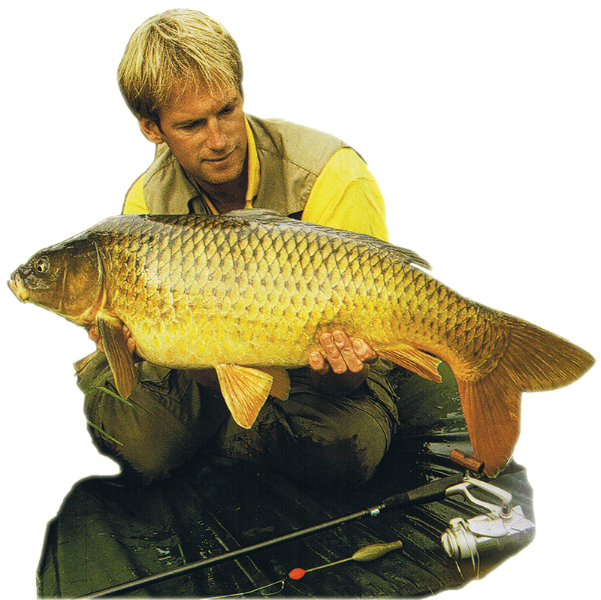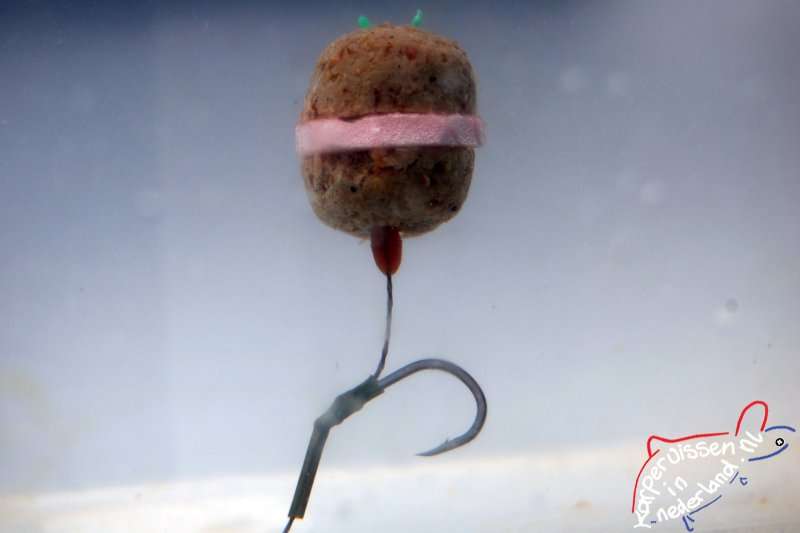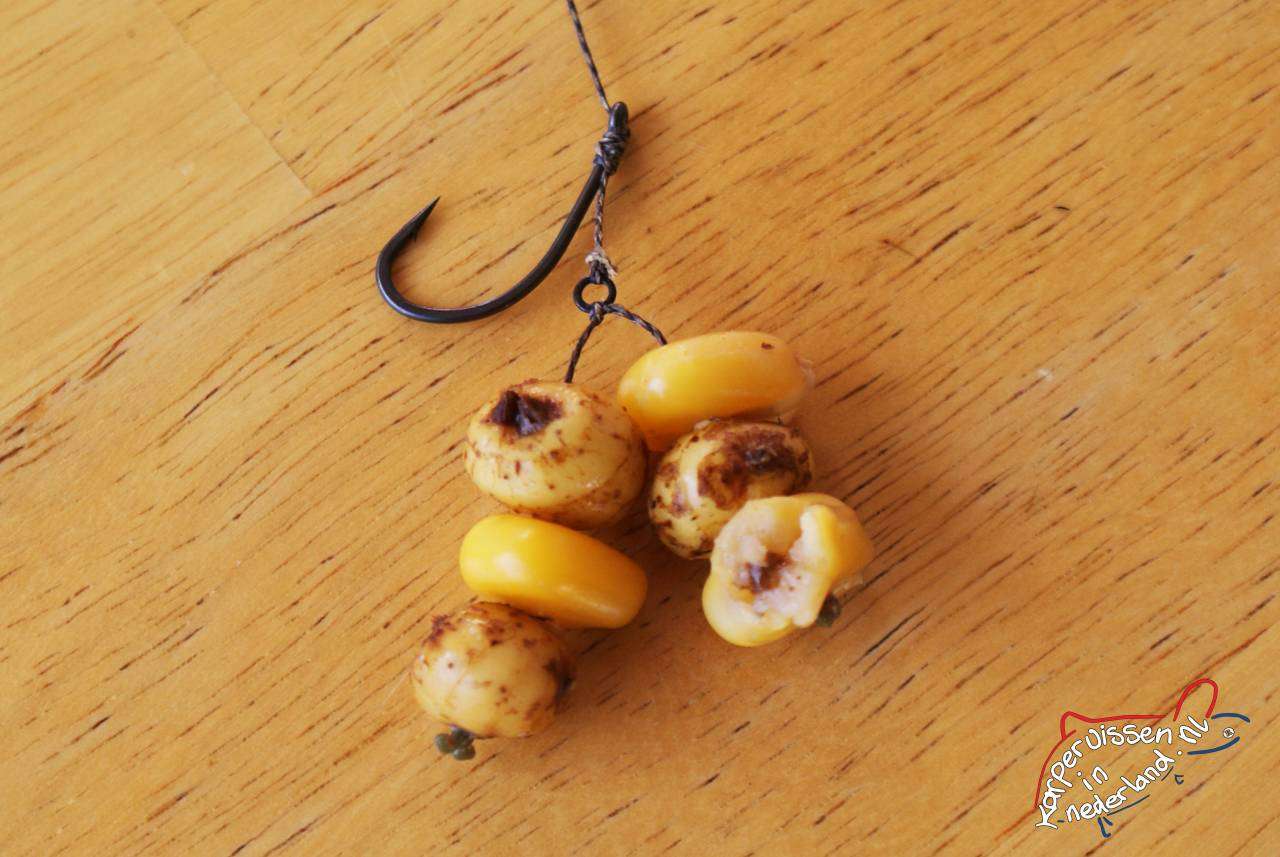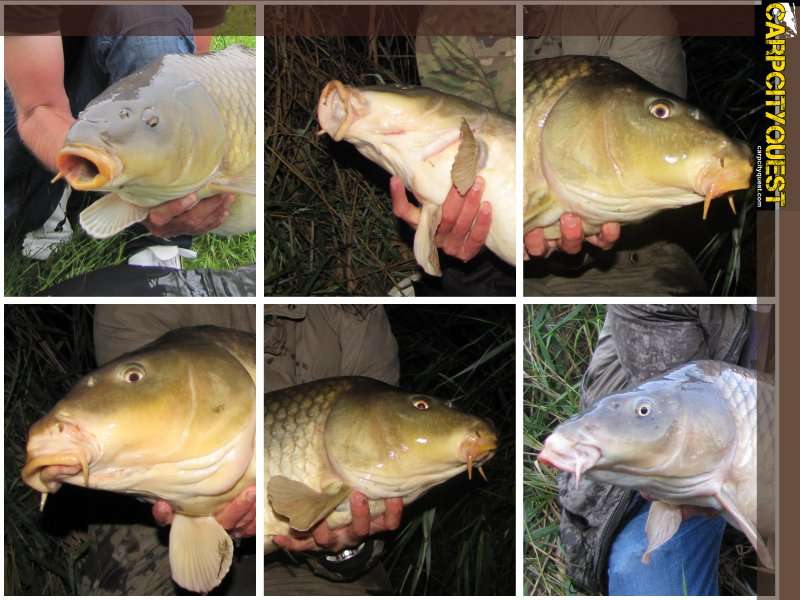Surface angling for carp; Hidden, I sit under a large overhanging willow, my senses heightened to the extreme, as a fat carp approaches my crust. Leaning at an angle in the water, it brings its big snout under the crust, it could happen any moment now. I try to get my accelerated heartbeat under control, but it only gets faster when I see the crust being sucked in by the carp. The curls are pulled from the line, the moment of truth is almost here! I point my rod tip towards the disappearing line, but at the moment of contact I see the sunken piece of bread come back up, damn.!
By Arnoud Terlou; Source: Beet magazine
Floating fishing for Carp
In my opinion, surface angling is the most exciting and nerve-wracking way of angling for carp. Especially when carp angling close to the bank where the distance between the carp and the carp angler is rarely more than 5 meters, often even less than a meter!. A large part of the carps that I have caught on the crust, took the bread virtually literally from under my feet. A carp angling method that is not for everyone and often requires the utmost concentration.
Instructive Way of Surface Angling for Carp

Arnoud Terlou in his younger years
So not an angling method for heart patients, but a very fascinating visual way of angling for carp that teaches you a lot about the behavior of carps. An angling method I grew up with and the experiences I gained from it still come in handy in my current carp angling.
Although on many carp waters the bread crust is still an excellent carp bait for surface angling, it may still be necessary to resort to other types of bait and ways of angling.
On heavily fished carp waters, the carps know the tricks of the trade and a bread crust is usually viewed with suspicion, especially on open stretches of water. On quiet parts of the carp water, where there is a lot of cover in the form of overhanging trees, plant beds or floating debris, carps sometimes still take a crust in the morning or evening twilight, but usually a crust is approached with distrust and rarely taken.
It often happens that the crust is spat out just as quickly, leaving a frustrated carp angler behind. If you also encounter dozens of extremely irritating ducks, coots and seagulls that have their eyes on your crust, it should be clear that angling with the bread crust has limitations. Is surface angling completely impossible on this type of carp water then? Fortunately not!
Angling with Floating Dog Biscuits and Cat Biscuits
Angling with floating dog and cat biscuits can then offer a solution, and also offers a large number of additional advantages over the good old bread crust. Carps are crazy about dog and cat biscuits, especially if they have been fed with them for a longer period of time. Floating dog and cat biscuits do not have the individual attraction of a bread crust. The often irresistible attraction for carps comes from many small floating baits on a limited surface so that they can gorge themselves without much effort. Moreover, carps simply like the savory chunks with fish or animal flavors, irresistibly delicious even!
Plenty of Choice
Floating dog biscuits and cat biscuits are available in numerous types and flavors in pet stores and the supermarket; and the carp likes them all!. But they are not all suitable for carp angling. Many of the hard chunks fall apart in the water in no time, others are so small and light that they can hardly be cast at a distance. The best chunks are those chunks that become spongy in the water. Not too small and yet compact in shape so that they can be shot at some distance with a catapult or throwing stick.
Pre-soaking the Chunks
A bread crust is easy to attach to the carp hook, but with the dog and cat chunks it is a bit more difficult. To be able to put them on the hook, the chunks must first be pre-soaked with water. Not too much, otherwise the chunks will become too soft, they must be as tough as possible. A simple method is as follows. Put some chunks in a large plastic bag and fill the bag with some water so that all the chunks are under water. Let the water soak in for a few minutes and then pour off all the water again. Then blow some air into the bag, tie it shut and let it stand for a few hours. Shake regularly. You will notice that the chunks are then tough and spongy. They have now become a bit heavier and easier to cast at a distance.
Controllers / Floats
Because these chunks are generally very light, you must have extra casting weight on your line when you want to angle a little further from the bank. You can use a so-called controller for this, or a pre-weighted float. Controllers are available in various types and sizes. Drennan and Kevin Nash, for example, have good controllers without an antenna and Terry Eustace and especially Fox supply very good controllers with an antenna. Depending on the circumstances (wind and distance) you choose a small light or large, heavy controller. The controller not only serves as a casting weight but also as a bite indicator, which is useful if your chunk is among dozens of others and various carps are greedily snapping around. With controllers with an antenna, the bite is the clearest to see (the antenna suddenly folds over), and therefore enjoy my preference, especially at somewhat greater distances or a ripple on the water.
The Attachment of the Chunks
The simplest way is to slide a chunk (or two) onto the hook up to the eye, ensuring that as much of the hook bend remains free as possible. It is important to use a small, preferably as light as possible hook so that the chunk hangs as naturally as possible in the water surface. I usually use hooks in sizes 8 to sometimes even as small as 12. Good, light and strong hooks with a wide bend.
You can also angle with hard chunks on the hook and sometimes that works even better. The advantage is that the chunk has more buoyancy, so the hook bait hangs less unnaturally in the water surface and is hardly distinguishable from the other chunks. With the help of special bait elastics this is very easy. Attach the elastic to the hook shank, pierce the chunk with the help of a boilie drill, pull the elastic through the chunk, stopper and Bob’s your uncle. If all goes well, the chunk is now clamped tightly against the hook shank.
Billieboys
When I can get a large number of carps to feed very greedily, I even angle with a cork ball, which I have cut into the shape of a chunk and glued to the hook shank. The carps fall for it time and time again without pardon! With this method I once managed to catch no less than 16 carps on the Bosbaan on a beautiful sultry summer evening in barely three hours. And that while hardly a fish was caught by the boilieboys! It was almost embarrassing to see how many carps I had feeding in front of me, who were loudly smacking one chunk after another. There must have been more than a hundred! It was striking that the carps that I caught floating at the time showed no trace of a previous catch. A phenomenon that I often encounter with this carp angling – you catch fish that are otherwise almost never caught.
It is very important to be patient when surface angling for carp with these chunks. Don’t start angling immediately when you see a carp feeding on the fed chunks. Keep feeding until you have more carps feeding. The longer you can control yourself, the better your chances will be. If you reach the stage of food envy, you are guaranteed to catch a number of carps in quick succession. The most important thing is to keep the carps feeding by regularly shooting a handful of chunks with a catapult. They often react to the sound of the falling chunks and immediately start snapping wildly around and twenty chunks are gone in no time.
Trust
Carp anglers are quick to think that there is no point in surface angling. Nothing is often less true! Carps can be caught not only on park ponds and shallow polder canals on the surface, but on many more waters than you think. If they cannot be seen or heard in the early morning hours (smacking, slurping), that does not mean that they do not want to come up when fed with dog and cat biscuits. On many waters you often see the carps lying lazily on the surface on warm summer days, often in the middle of the pond, away from all the hustle and bustle. The boilie boys are lying lazily on their stretchers, bottom bait is not looked at – the time to get started with floating bait! Warm days (preferably with little wind) are best for this exciting and active angling, but make no mistake, especially quiet misty autumn days offer good opportunities and I have even caught carps floating while the largest part of the water was covered with ice!
One last tip; if the carps are still sporadically feeding on the fed chunks, present a small bread crust in the same way – back to that good old trusted bread crust!



